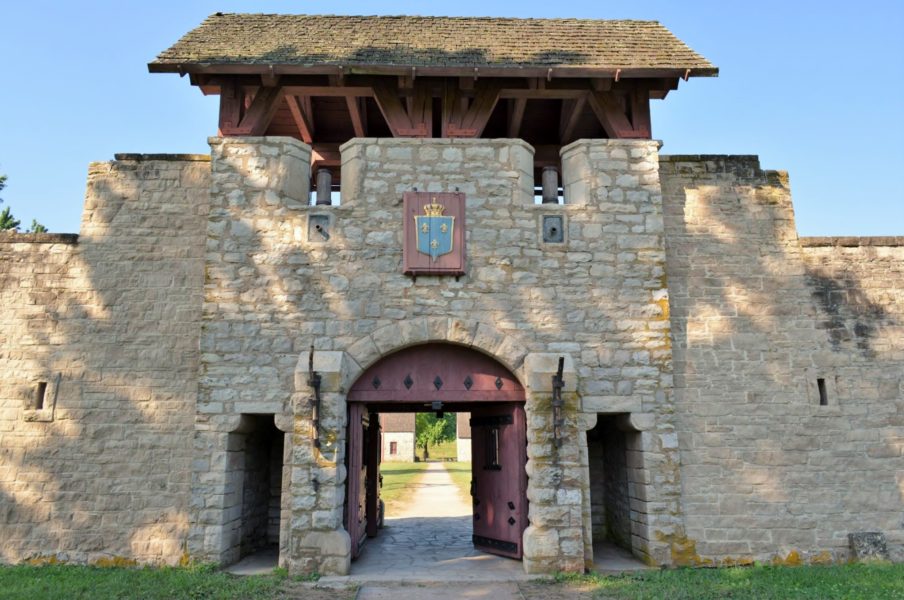
The Fort de Chartres is a state historic site under the protection of the Illinois Department of Natural Resources, Historic Preservation division. It is located about 4 miles west of Prairie du Rocher, Illinois. The Fort has been coined the “Castle in the Corn” by locals due its seemingly random placement in the middle of farm land. The large structure was home to French settlers when they first inhabited the Illinois area in the 18th century (1753-1772). The Fort served as the central government and military base.
Fort de Chartres hosts many reenactments during the year and I was a visitor during their 2022 Fort de Chartres Rendezvous on June 4. It was a hot day but that did not stop visitors from walking through the Fort as men, women and children wore colonial clothing and stayed in traditional tents. For those with Native American lineage, they wore their traditional 18th century garb and stayed in teepees. Various homemade items such as wooden kitchenware, cast iron cookware and metals were available for purchase. The Rendezvous offered cannon shootings, musket shooting and battle reenactments with a full warring marching band.
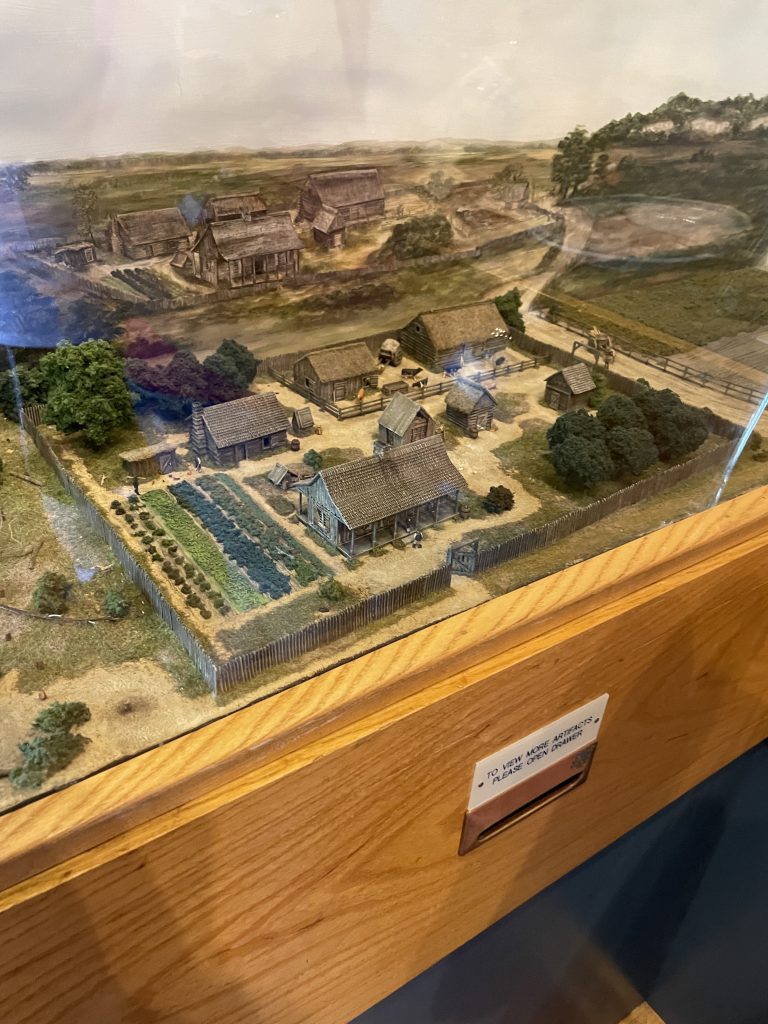
The Fort museum is located in a side building within the grounds. The hours of operation are Tuesday to Sunday from 9 am to 4:30 pm. There are stairs to gain entrance into the museum and although there are not many, there is no wheelchair accessibility. Upon entering, the museum is cozy and fairly well lit with most lighting aimed at the exhibits. The space is well utilized with objects found on the grounds and details a small history of Fort de Chartres that can be heard audibly as you approach a diorama of the Fort.
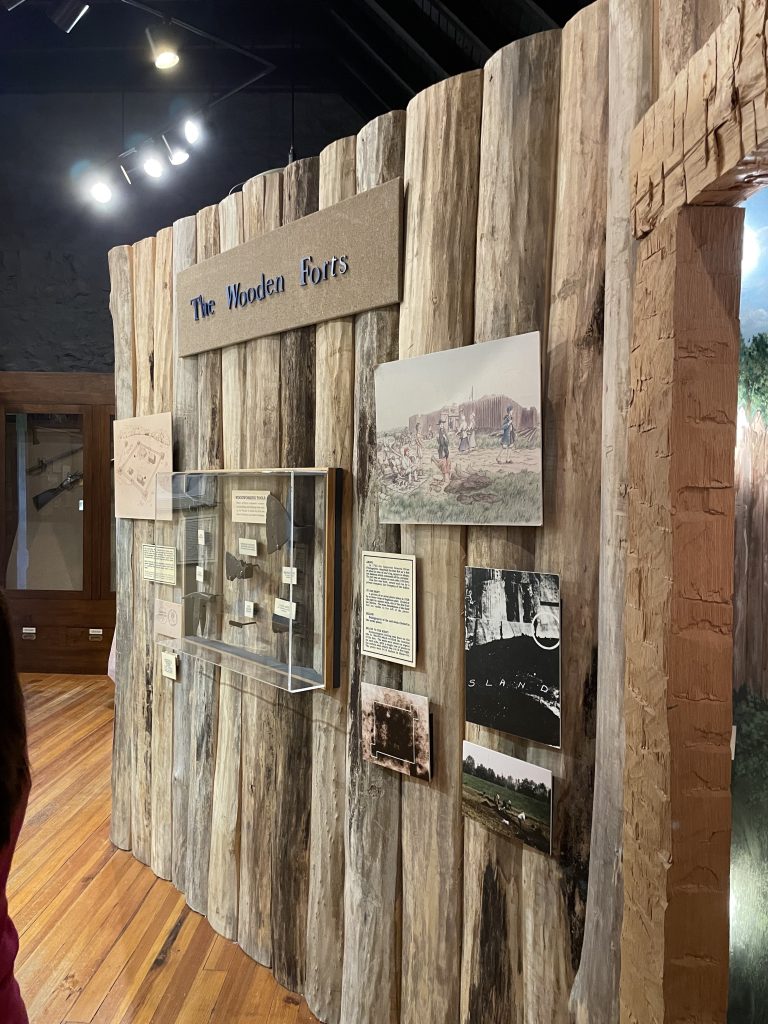
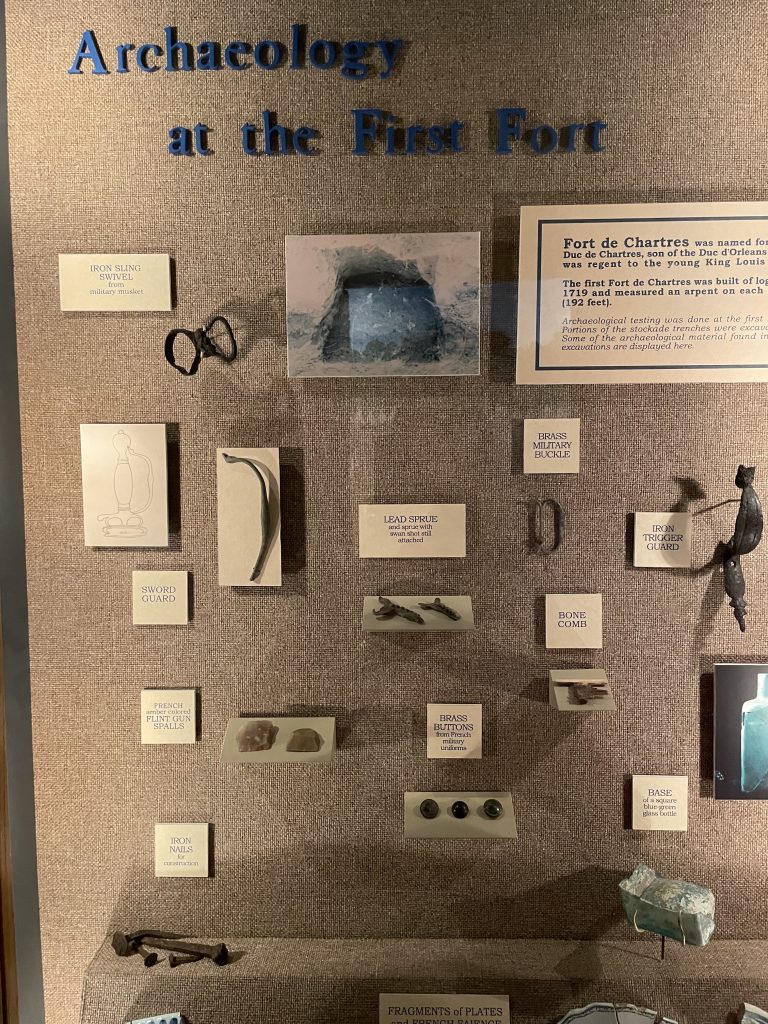
The layout of the museum was very linear. The visitor followed a curated path of artifacts found on the Fort grounds. The exhibits seemed basic but well thought out. I was not very impressed but needed to remind myself that considering the financial limitations that are available to the Fort, having a museum at all is a gift to the public. There was limited space and the museum did a great job utilizing it to create as much traffic low as possible while also informing the public on various exhibits. The museum may be limited but they tried their best in engaging with visitors as best they could. The exhibitions were directed towards visitors with limited or no knowledge of the Fort’s history.
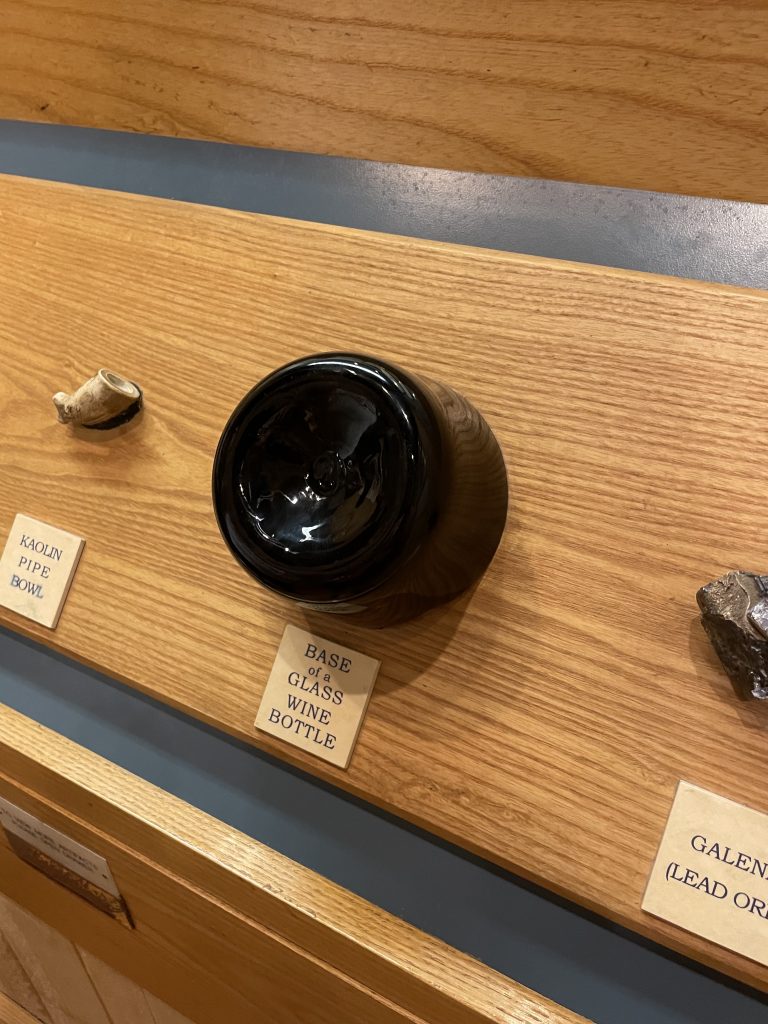
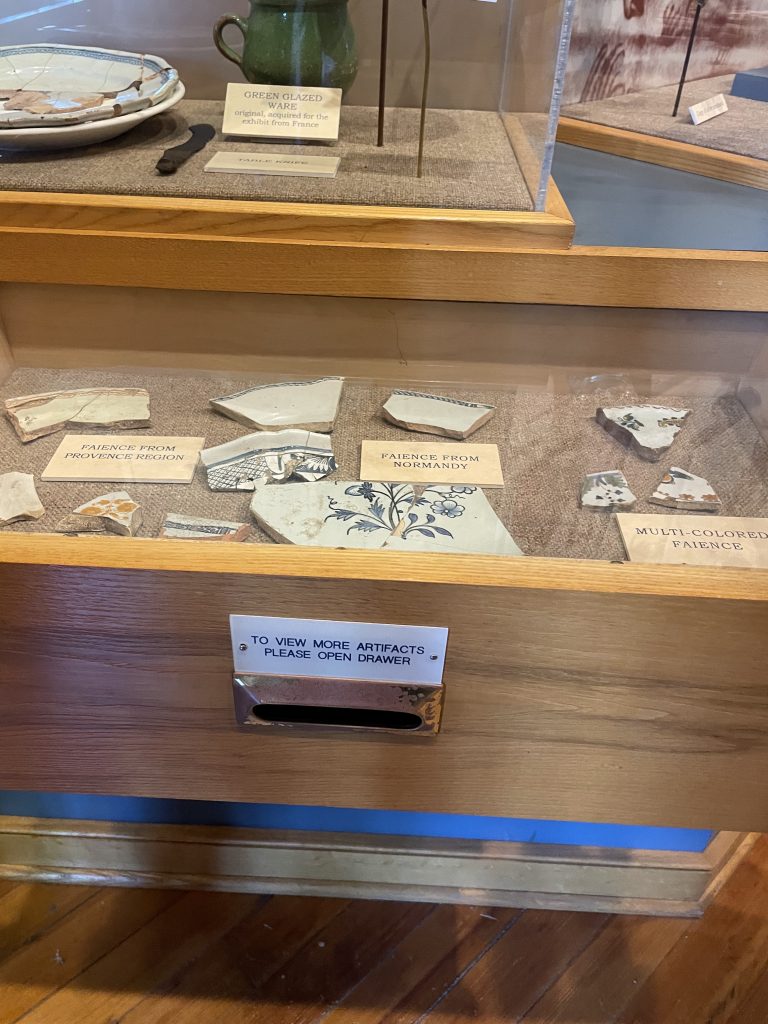
There was a lot of information to take in as they people started to file in. It being a celebration weekend, the site was busier than usual. I felt I was not able to look or read as much as I had intended due to the feeling of being rushed by other visitors and children. There were a lot of labels, but they did a good job of balancing the artifacts, maps and dioramas and information. Many of the exhibits were of ceramic plates, cufflinks, and a few guns. It kept the visitor interested without boring them. The space being narrow and small, it was not ideal for an influx of visitors. However, I was happy to see people visit the museum instead of bypassing it for other Rendezvous activities. The museum would benefit for some updating. Not necessarily technology but with newer labels and better lighting. I do not think that the museum had intended to mislead the public in any way, but some of the artifacts seemed to be replicas. There were no signs telling that they were original, yet there were no signs saying they were not either. Being a museum studies professional, I feel this is something that the Fort museum needs to address. Their security poses a concern as well. There seemed to be no true form of security besides a locked door, which makes me wonder how authentic some of the collection truly is.
Picture source
Fort de Chartres State Historic Site
I visited Fort de Chartres in the off-season of February 2020. I spent a good amount of time in the museum because it was so empty there, but I would definitely have been overwhelmed if it was busy – honestly kind of a tight squeeze in there sometimes, but it’s a great use of space like you said.
Also, I agree that a lot of the objects seemed like replicas – I remember seeing at least one label or something about it. I think a lot of the artifacts are owned by local historical societies and displayed there at the Fort, rather than the Fort owning the stuff, but I’m not sure.
Thank you for sharing!!! 🙂
I’m super happy you went to Fort de Chartres! I used to go there with my family all the time as a kid and it is still one of my favorite places. I enjoyed seeing the museum is doing better than it used to, and I definitely want to return one day! Also, pro tip: the Fall events are a must as they have fewer people, but the atmosphere and scenery of a different season help to hone one’s idea of how people would have lived in a different age.